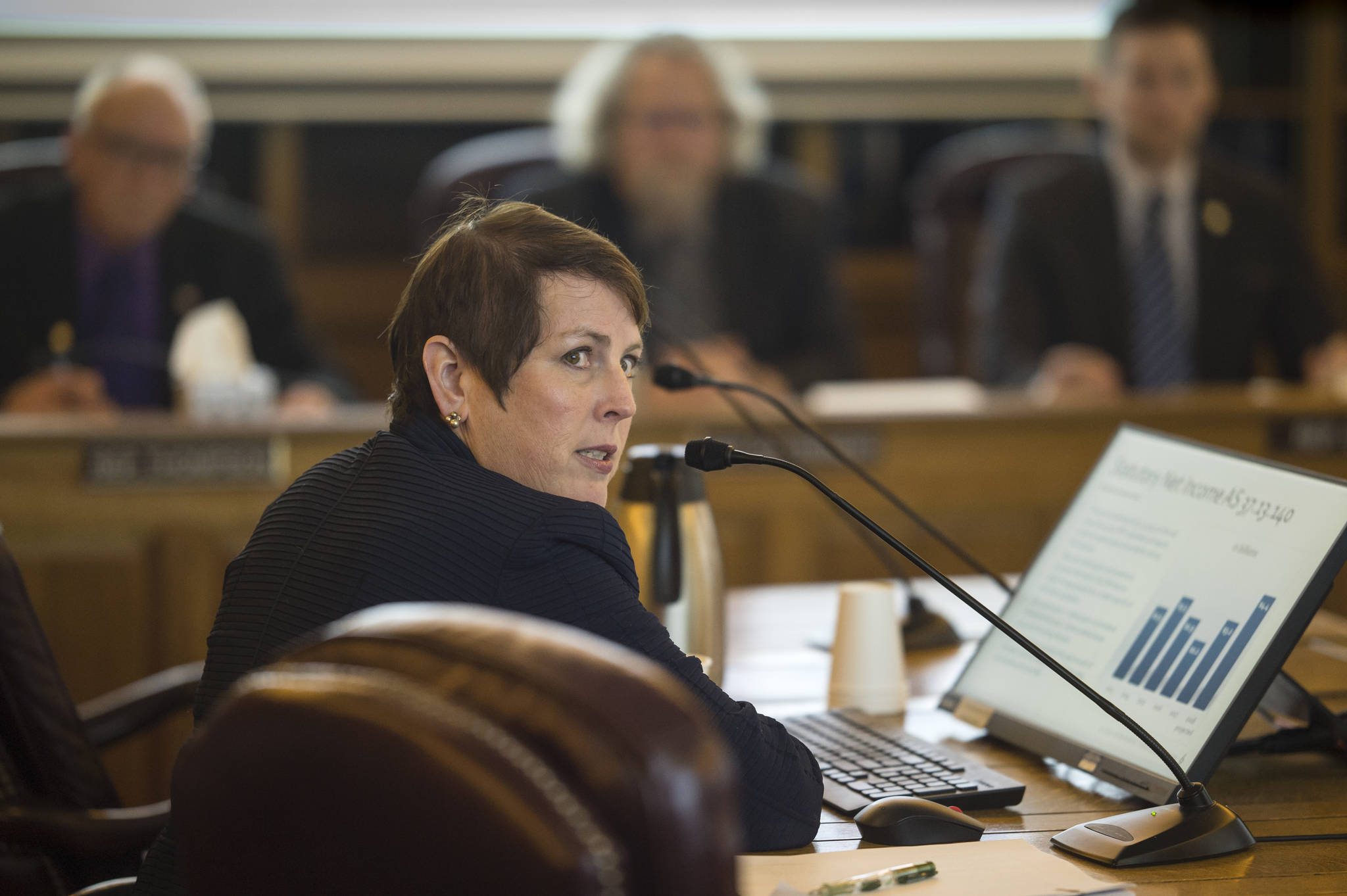Since 2003, the Board of Trustees has endorsed using a percent of market value (POMV) methodology for determining how much should be drawn from the Alaska Permanent Fund.
A POMV establishes a limit to the amount that can be drawn from the fund and is based on its average annual market value over five years. A POMV draw has a number of benefits which include protecting the entire fund from overspending, providing a certainty of liability the fund can manage for, as well as providing a structured, long-term source of revenue for beneficiaries of the draw. This endowment-style payout method would provide more stable and predictable payout amounts from year to year, even in down market years, and is compatible with the board’s current investment strategy.
In December, the trustees asked one of Alaska Permanent Fund Corporation’s investment partners to “stress” the board’s adopted asset allocation assuming two different draw scenarios. The purposes of these stress tests were to get a sense of what economic conditions would hinder the capacity of the fund to provide any required POMV distribution.
History tells us markets go up, and markets go down. None of us are concerned about the ability to make contributions while markets are heading up. What we didn’t know was how much a sharp drop in the market or an extended period of really low returns would affect the fund and our ability to make those contributions. This was the information we were seeking from the analysis conducted by Bridgewater.
There are a number of important takeaways in what was learned.
• Making regularized structured draws allows the fund to not be overdrawn in up markets, ensuring assets stay invested for longer periods, earning higher rates of return;
• In looking at multiple 10-year periods that have occurred since 1925, the analysis told us 40 percent of those periods would cause the Earnings Reserve Account, the spendable portion of the Fund, to be lower than what it was on July 1. It also told us that 12 percent of those periods would cause the Earnings Reserve Account (ERA) balance to be drawn down to zero 10 years from now. It also provided detailed analyses of stress events — for example showing a deep market selloff such as what occurred in 2008 can have the effect of temporarily wiping out the ERA for a short — one to two year time period – resulting in the fund’s inability to yield a contribution for those years.;
• A period of extended lower rates of return will have the effect of providing draws which reduce the ERA balance and not allow the principal of the fund to grow due to missed inflation proofing transfers. The stress analysis demonstrated that there is about a 48 percent chance that returns would fall short of the 6.3 percent required to make expected contributions including inflation.
The Board of Trustees has not changed its support of a structured POMV methodology in light of these takeaways. Rather, they reinforce the Alaska Permanent Fund Corporation’s responsibilities as fiduciaries of the fund. Our responsibilities as fiduciaries mean that we will take prudent measured risk; we will adjust our asset allocation as we deem necessary recognizing various risk and reward elements of each type of investment and that we will continue to invest with the goal of creating benefit for all generations of Alaskans.
Since the fund’s inception and initial deposit of $734,000 in oil royalties, the fund has grown to a current value of over $66 billion. In just the past few years, the fund has increased in value from $52.8 billion at the beginning of Fiscal Year 2016 to $59.8 billion at the beginning of Fiscal Year 2018. Amid the success of the fund, there is an ongoing debate regarding both how much of a draw from the fund should be taken, as well as how that money should be used.
We have had a constitutional and statutory contract with Alaskans in place since the fund’s creation over 40 years ago, an agreement as to how deposits and withdrawals are made. As the Permanent Fund is central to policy decisions pertaining to the composition of state funding, it’s time for Alaskans to establish a new contract to support the evolution and continued health of the fund by adopting a POMV structure. I have complete confidence that we can do it and that we can do it now.
Angela Rodell is the CEO of the Alaska Permanent Fund Corporation.

